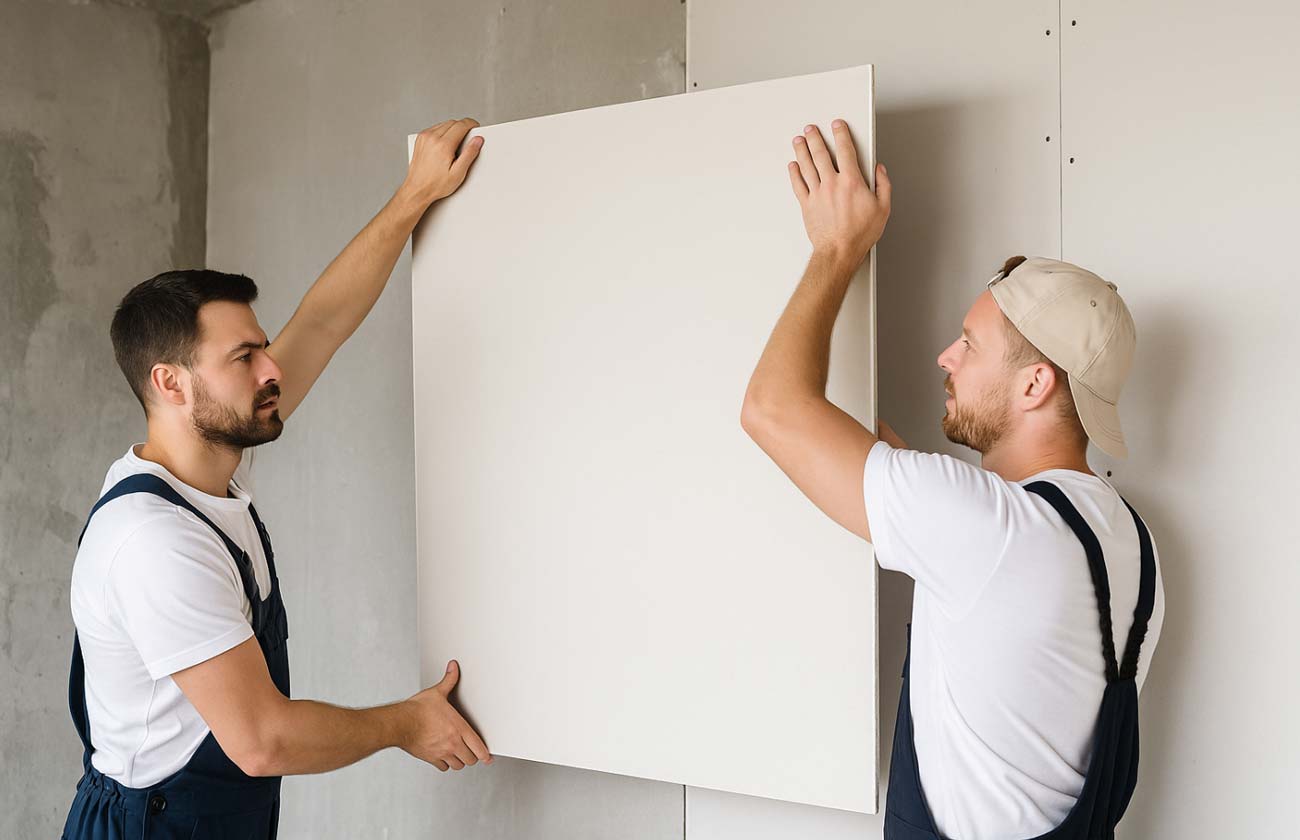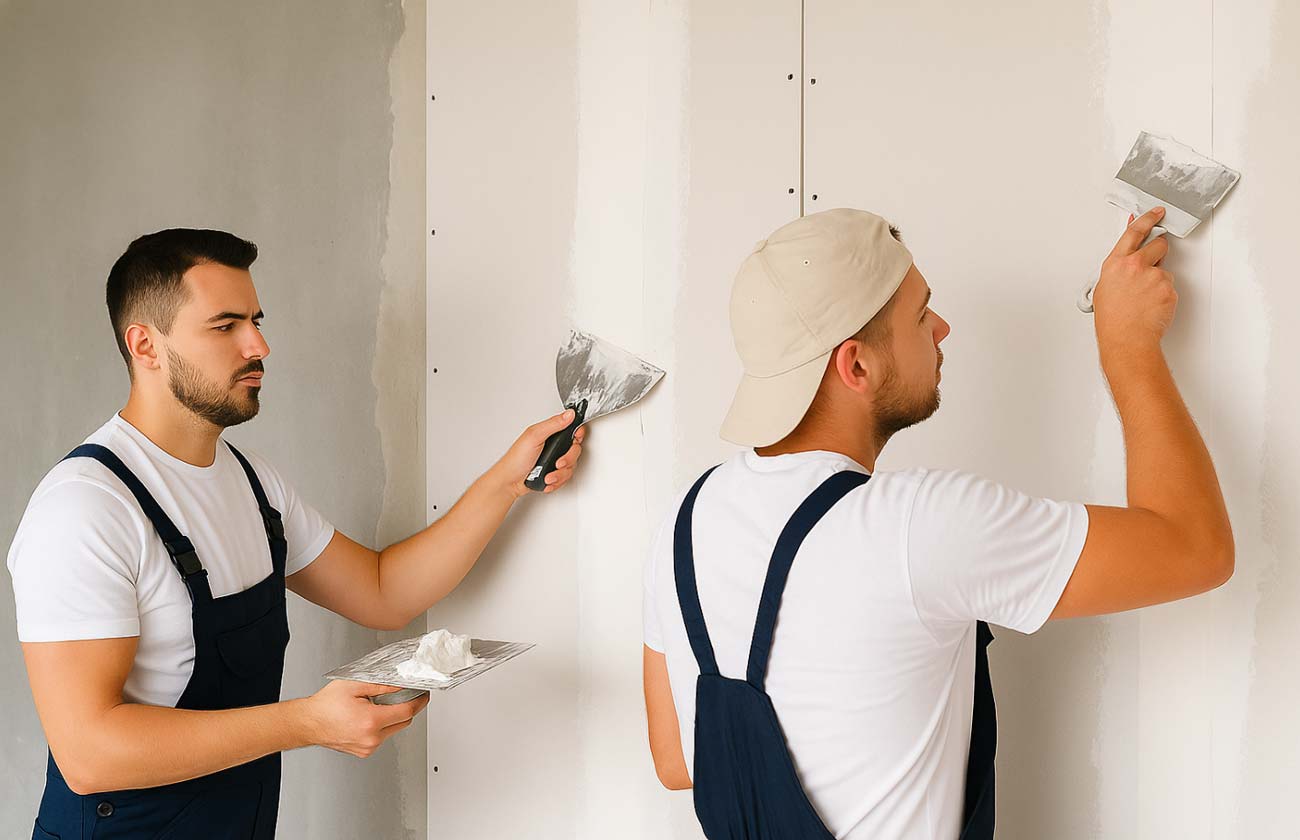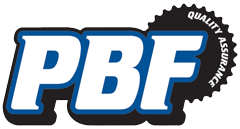
21 Aug Renovating Your Home? Don’t Overlook the Importance of Gib Fixing and Stopping
Gib Fixing and Stopping: The Finishing Details That Make All the Difference in Your Home Renovation Project
When renovating a home, most people focus on the obvious transformations—new kitchens, fresh paint, or flooring upgrades. Yet one of the most critical stages in achieving a high-quality finish is often overlooked: gib fixing and stopping. This process forms the foundation for every wall and ceiling surface, ensuring a smooth and consistent result before the final coat of paint is applied. Whether you’re building new or renovating existing interiors, the quality of plasterboard installation and finishing directly affects how flawless the end result will appear. Correct sheet layout, effective back-blocking, and skilled stopping are essential to prevent cracking—especially near high-stress areas such as the corners of doors and windows.
A well-executed gib fixing and stopping job also enhances the overall durability of your interior. Without proper attention to batten spacing, skimming techniques, and wall preparation, even the best painting services won’t deliver that premium finish. Whether it’s a residential renovation or a large-scale commercial project, a seamless surface is the outcome of precision and experience. That’s why those seeking consistent quality and long-lasting results across Auckland rely on PBF for expert gib fixing and interior plastering. Their team understands the full plasterboard installation process, delivering results that not only look flawless but stand the test of time.
What is Gib Fixing and Stopping?
Understanding Gib Fixing
Gib fixing refers to the installation of plasterboard sheets on walls and ceilings, forming the essential foundation for interior surfaces. The process involves accurately cutting, positioning, and securing gib boards to timber or metal framing, ensuring consistent alignment and stability. A skilled fixer takes care to apply correct sheet layout, batten spacing, and back-blocking techniques to minimise movement and reduce the risk of cracking. Precision during this phase is essential, as errors in fixing can lead to uneven surfaces and long-term structural issues in both residential and commercial projects.
Where the fixing stage sets the base, the quality of the finish depends on attention to detail. Professionals working in gib fixing must understand how different conditions—such as humidity, lighting, and framing materials—can affect plasterboard installation. Their work directly influences the ease of gib stopping that follows. Poor fixing can undermine the stopping and painting process, so craftsmanship and experience at this stage are vital to achieving a seamless interior finish.
Importance of Gib Stopping
Gib stopping is the critical finishing step that involves covering the joints, screw holes, and any imperfections in the plasterboard with a compound before sanding it down to achieve a smooth, even surface. It’s an essential part of preparing walls and ceilings for interior painting. An experienced stopper uses layering techniques, skimming tools, and careful sanding to ensure a consistent surface free from visual blemishes. This stage directly impacts how paint adheres and how light reflects across the room—important factors in any quality renovation.
Done well, gib stopping ensures a high-level finish that meets ASNZ standards, whether you’re aiming for a Level 4 or Level 5 surface. It also provides maximum crack resistance, especially near vulnerable areas like the corners of doors and windows. In the world of interior plastering, this step transforms raw plasterboard into walls ready for decoration. When done by professionals, such as those at PBF, the difference is not just visible—it’s lasting.
Common Gib Board Uses
Plasterboard, commonly referred to as gib board, is a versatile material used extensively in both residential and commercial construction. Its primary application is in forming the internal linings of walls and ceilings, offering a cost-effective, fire-resistant, and smooth surface ready for finishing. Whether it’s for new builds, home renovations, or large-scale commercial projects, gib board plays a central role in defining interior spaces. It can be installed in various configurations, depending on acoustic, moisture, or impact resistance requirements.
Beyond basic wall and ceiling applications, gib board is also used in specialised areas such as bathrooms, kitchens, and stairwells, where added moisture or fire protection is needed. Paired with quality gib fixing and gib stopping, these boards can support both textured and smooth finishes, allowing for complete design flexibility. Proper use of gib board enhances the durability and aesthetics of a space, making it a key material in the plasterboard installation process.

How to Choose the Right Gib Board for Your Project
Types of Gib Board Available
Selecting the right type of gib board is essential to achieving a durable and professional interior finish. Standard gib board is commonly used in dry areas such as bedrooms and living spaces, offering a cost-effective and smooth surface ideal for painting. In contrast, moisture-resistant plasterboard is suited to high-humidity areas like bathrooms and laundries, where standard boards may degrade over time. For added durability and impact resistance, high-density options are available, particularly useful in high-traffic or commercial environments.
Other variations include fire-rated gib board for improved fire protection, and acoustic-rated options designed to reduce sound transmission between rooms. Choosing the correct board type helps prevent future issues like fixing failures or moisture damage, and ensures compatibility with both gib fixing and gib stopping techniques. Each board type also affects the plasterboard installation process, requiring adjustments in sheet layout, back-blocking, or batten spacing to meet performance requirements and deliver a seamless result.
Factors to Consider When Choosing Gib®
The specific needs of your space should guide your selection. Consider the room’s function, environmental conditions, and level of wear and tear. For example, areas near the corners of doors and windows require boards that offer maximum crack resistance. Rooms with high moisture exposure demand moisture-resistant boards to protect against swelling or mould. For renovations involving textured or smooth finishes, it’s also important to choose plasterboard that can handle the intended surface treatment—whether it’s skimming, wall skimming, or textured application.
Project scale and budget will also influence your choice. Large-scale commercial projects may benefit from boards that are easier to install and finish efficiently, while smaller residential renovations might prioritise flexibility and finish quality. Compatibility with stopping and painting processes, as well as the required finish level—such as Level 4 or Level 5—will determine whether additional features like fire resistance or acoustic control are necessary. A professional gib fixer or plasterer will assess all of these factors before installation begins.
Gib Supply Options in Auckland
In Auckland, there is a wide range of gib supply options available for both residential and commercial applications. Suppliers across the region cater to different project requirements, from small home renovations to large-scale commercial sites. Stock availability typically includes standard, fire-rated, moisture-resistant, and acoustic-rated boards, ensuring that tradespeople and builders have access to the right material at the right time. Some suppliers also offer delivery and sheet-cutting services to streamline the plasterboard installation process.
It’s important to ensure that the gib supply matches current ASNZ standards and is stored in optimal conditions to maintain board integrity. Quality supply chains contribute significantly to the success of any interior plastering or gib fixing project. Working with experienced professionals who understand not only installation but also sourcing—such as the team at PBF—can help ensure every stage of the process meets expectations for finish, durability, and overall workmanship.
What is the Process of Gib Fixing?
Step-by-Step Gib Fixing Guide
Gib fixing begins with careful preparation of the framing, ensuring all battens are straight, secure, and correctly spaced. Once verified, the gib board is measured and cut to size before being fixed horizontally or vertically to the wall and ceiling framework. Each sheet must be properly aligned to allow for correct sheet layout and minimal joint movement. Fasteners are applied at recommended intervals, with attention to the edges and field of each sheet to prevent future fixing failures.
After fixing the sheets, back-blocking is used to reinforce recessed joints, reducing the risk of cracking and improving surface stability. It’s important that each board is installed flush and firmly against the framing to create a smooth finish for the stopper. Corners near doors and windows require special care, as these areas are more prone to stress. A skilled gib fixer will factor in lighting, airflow, and room use when selecting installation direction and technique, ensuring maximum performance and visual consistency.
Common Fixing Failures and How to Avoid Them
One of the most common issues in gib fixing is sheet movement caused by improper screw spacing or uneven framing, which leads to visible cracking or popping. Insufficient back-blocking, particularly on ceilings, can also result in joint failure over time. Another frequent problem arises from overdriven fasteners, which weaken the board’s structure and compromise its ability to hold plaster securely. These faults not only affect the aesthetic outcome but also reduce durability and can impact the performance of any interior painting or finishing work.
To avoid these issues, precise attention to detail is essential during the entire plasterboard installation process. Fixers must ensure framing is level, fixings are installed flush without breaking the paper surface, and all joints are correctly aligned. Inconsistent sheet layout or ignoring thermal expansion gaps can lead to long-term problems. Choosing a team with experience in both residential and commercial project work—such as the professionals at PBF—can help ensure your plasterboard walls and ceilings are ready for a flawless finish that stands the test of time.
How to Achieve a Smooth Finish with Gib Stopping
Techniques for Effective Gib® Stopping
Achieving a smooth finish with gib stopping relies on precision, technique, and an understanding of plasterboard behaviour. The process begins by applying a jointing compound to all recessed joins, screw holes, and corners. This is followed by the placement of joint tape to reinforce seams and prevent cracking. Each area is then layered with multiple coats of compound, allowing time to dry fully between applications. A level finish is built gradually through careful layering, not heavy coverage.
The final coat is critical—it requires a steady hand and a keen eye to ensure no ridges, drag marks, or tool lines are left behind. Once dry, surfaces are sanded using fine-grade tools to blend the compound seamlessly into the surrounding gib board. This prepares the wall and ceiling for interior painting or texturing. Attention to environmental conditions such as lighting and humidity during the stopping phase can also affect the long-term quality of the finish.
Importance of Skimming for Smoothness
Skimming plays a vital role in creating a uniform finish on plasterboard walls and ceilings. It involves applying a thin, even layer of finishing compound across the entire surface—not just the joints—to eliminate any subtle inconsistencies in board texture. This is especially important for Level 5 finishes, where light exposure reveals every minor imperfection. Skimming allows for a truly seamless surface, essential in modern homes and commercial interiors that demand clean, minimalist aesthetics.
When done correctly, skimming helps ensure a smooth finish across large surfaces, especially in open-plan areas where natural and artificial light can highlight uneven patches. It also improves the bond and appearance of the final coat of paint. If combined with precise gib fixing and back-blocking, it provides long-term stability and crack resistance. PBF applies these techniques as standard practice, ensuring interior plastering meets both functional and visual expectations on every residential or commercial project they undertake.
Professional Gib Fixers vs DIY
While it may seem straightforward, gib stopping is a skill that takes years to master. Professional gib fixers understand how to assess wall alignment, apply compound at the right thickness, and feather out edges to avoid visible seams after painting. They are also trained to identify and correct common issues such as joint shadowing, corner shrinkage, or over-sanding. In commercial projects or full-house renovations, consistency across rooms is critical—something best left to experienced tradespeople.
DIY attempts often result in uneven finishes, raised joints, or visible patches after interior painting is complete. These imperfections are difficult and costly to correct once the plaster has set. Without the proper tools, timing, and understanding of the plasterboard installation process, even a small project can fall short of expectations. Engaging a skilled team like PBF ensures the surface is professionally prepared for whatever final aesthetic you have in mind—textured or smooth, bold or understated.
What Are the Benefits of Professional Gib Fixing and Stopping?
Quality Craftsmanship in Plasterboard Installation
Professional gib fixing and stopping is essential to achieving high-quality wall and ceiling finishes that stand the test of time. Skilled tradespeople ensure plasterboard is installed with correct sheet layout, proper fastener placement, and consistent alignment. This level of attention minimises joint movement, reduces the risk of cracking, and provides a reliable base for gib stopping and subsequent painting services. Quality craftsmanship at this stage ensures the finished surface is flat, stable, and ready for a flawless decorative coat.
Precision in plasterboard installation contributes to long-term structural integrity and superior aesthetic results. Careful back-blocking, clean corners near doors and windows, and well-executed battens all support a consistent outcome across residential or commercial projects. A professional gib fixer will also consider lighting direction, framing quality, and environmental conditions to maximise durability and visual appeal. Without these standards in place, even the best plasterboard may not perform as intended once stopping and painting begins.
Benefits of Hiring Experienced Plasterers
Hiring experienced plasterers means the difference between a basic finish and one that reflects expert-level attention to detail. Professionals can identify common fixing failures before they occur—such as misaligned joins, uneven batten support, or incorrect compound application—and take steps to prevent them. They also understand how to work efficiently within a renovation or new-build schedule, avoiding delays while still delivering premium workmanship. From wall skimming to seamless surface preparation, every step is handled with accuracy.
A trained team brings more than just technical ability; they also offer knowledge of ASNZ standards and the latest techniques in the world of interior plastering. This ensures compatibility with different project types, whether the finish is textured or smooth, and whether the work is completed in a single room or across large-scale commercial spaces. Working with a specialist provider like PBF helps to maintain consistency, especially in jobs requiring high-end finishes or integration with other trades such as painters in Auckland.
Commercial Project Considerations
Large-scale commercial projects require more than just technical skill—they demand reliability, coordination, and the ability to meet tight timeframes without compromising finish quality. Professional gib fixers experienced in commercial environments are adept at working in fast-paced conditions, aligning with other trades, and managing multiple zones simultaneously. The plasterboard installation process must be efficient, while still delivering a smooth finish that will hold up under inspection and daily wear.
In commercial spaces such as offices, retail fit-outs, or institutional buildings, imperfections can compromise both visual appeal and compliance. Experienced teams are able to scale operations while still applying best-practice gib fixing and stopping techniques. That includes correct use of materials, attention to back-blocking and expansion gaps, and finishing to Level 4 or Level 5 standards where required. Commercial clients benefit most from contractors who understand the balance between volume, craftsmanship, and consistency—something that sets providers like PBF apart in the Auckland region.

How Do You Prepare for Gib Fixing and Stopping?
Essential Tools and Materials Needed
Effective preparation is essential for a successful gib fixing and stopping project. The right tools and materials not only improve efficiency but also contribute to a high-quality finish. Core tools include a utility knife for cutting plasterboard, a screw gun or drill for securing sheets, and a T-square or straight edge for accurate alignment. Other essentials include a plasterer’s hawk and trowel, sanding tools, jointing knives, and a reliable platform or scaffold for working at height. Measuring tapes, laser levels, and stud finders also assist in achieving precise wall and ceiling alignment.
In terms of materials, plasterboard sheets should be selected based on the room’s moisture levels, fire rating requirements, and acoustic needs. Jointing compounds, paper tape, and back-blocking materials are also required. Ensuring a clean, dry environment before starting helps reduce the likelihood of fixing failures. Professionals use quality gib supply and compounds suited to the scope of each residential or commercial project.
Planning Your Sheet Layout for Efficiency
Before installing any gib board, a well-considered sheet layout should be finalised to maximise material use and minimise waste. This includes measuring the wall and ceiling areas, marking stud positions, and identifying obstructions such as windows, doors, or electrical points. Efficient layout planning reduces unnecessary joints, helping to streamline the gib stopping process and improve the finish on your plasterboard walls. Placing boards horizontally or vertically can influence stability and visual consistency, especially in open-plan or high-traffic spaces.
Good layout also supports correct back-blocking and joint alignment, which is essential for a seamless surface. Avoiding long, continuous joins and aligning sheets with framing supports ensures strength and reduces movement that may lead to cracking. In large scale commercial projects, thoughtful sheet layout is especially critical for coordinating with other trades and maintaining project timelines. The team at PBF applies these planning principles as standard practice, helping to deliver flawless finishes across all types of interior spaces.
What Should You Know About Gib Fixing and Stopping for Renovations
Key Differences Between Residential and Commercial Projects
Residential and commercial renovation projects often demand different approaches to gib fixing and stopping. In homes, there’s typically greater emphasis on fine detail, lighting effects, and achieving a smooth finish in lived-in spaces. This requires careful handling of plasterboard around features like window reveals, doorways, and cornices. Room layouts are often more varied, and homeowners may request higher levels of finish—such as Level 5—for spaces with critical lighting or bold colour schemes.
In contrast, large scale commercial projects prioritise speed, consistency, and scalability across multiple units or zones. Sheet layout and material selection must support durability and long-term performance in high-traffic areas. Joint alignment, back-blocking, and access planning are coordinated alongside other trades, such as electricians and ceiling installers, to avoid disruption. While the same principles apply, commercial environments often involve greater quantities of gib supply, larger crews, and more robust coordination—skills well-handled by experienced teams such as those at PBF.
Renovation Tips for Seamless Wall and Ceiling Finishes
Renovating existing interiors comes with unique challenges, particularly when blending old surfaces with new plasterboard. Achieving a seamless surface requires attention to alignment, framing condition, and any movement in the original structure. Uneven studs, historical framing irregularities, or older paint layers can all affect the gib fixing and stopping process. To ensure a smooth finish, all surfaces should be checked for moisture damage or warping before installation begins.
Where new boards meet existing surfaces, back-blocking and skimming help reduce visible transitions. Ensuring a consistent compound application across the entire wall or ceiling—rather than just at the joins—improves the base for interior painting. In Auckland homes where renovations are often staged, controlling dust and maintaining clean work zones is vital to protect finishes and maintain air quality. Careful sheet layout, expert stopping, and refined skimming techniques are crucial for achieving a consistent result across varied surfaces and lighting conditions.
Conclusion
Gib fixing and stopping form the structural and aesthetic backbone of any well-executed renovation or construction project. From the initial stages of plasterboard installation through to the final skim coat, each step requires technical skill, planning, and attention to detail. Whether it’s a small residential renovation or a large scale commercial project, the quality of gib board installation directly influences the final appearance and durability of the wall and ceiling finishes. When executed properly, the result is a seamless surface that enhances the overall interior space, ready for painting services or decorative finishes.
Proper execution also involves more than just applying plaster to a surface. It demands a thorough understanding of sheet layout, back-blocking, compound layering, and the varying requirements of different environments—from textured or smooth finishes to the specific stress points near the corners of doors and windows. In Auckland, working with experienced professionals such as PBF ensures each stage of the gib fixing and gib stopping process meets the highest standard of craftsmanship and compliance.
